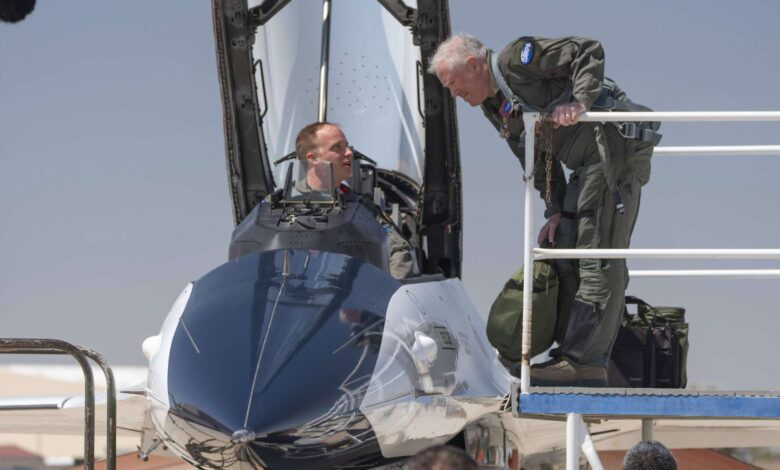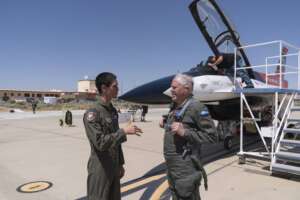AI and human pilots were ‘roughly even’ during latest tests

Last week, Air Force Secretary Frank Kendall boarded an “extensively modified” F-16 controlled by artificial intelligence.
The F-16 Kendall was in was up against a pilot with up to 3,000 hours of experience.
The fight, Kendall said, was “roughly even.”
“I guess the less experienced pilot — the AI, the automation would have performed better. That’s where we’re going,” Kendall said during the Ash Carter Exchange on Wednesday.
These experiments were being conducted within visual range engagements — where two aircrafts are just a couple of miles apart and pilots can see each other. “It’s shorter range, more maneuver dominated,” said Kendall.
The crew tested out various versions of what’s called “agents” — they can take control of the aircraft, conduct maneuvering and automate engagements. The plan was to go through about a dozen different scenarios.

“I was in the front seat and I had a button on my stick where basically I would initiate the automation. Once we were set up at the right visual cues or where the threat was — either in front of us, behind us or in a meeting engagement — I would hit the stick and we would start to maneuver to a position of advantage and put ourselves in a position to either get away from the other adversary or be able to open fire and engage in,” said Kendall.
The technology is not there yet, he said, but it is making significant progress.
“We got to see three different versions of it. They all performed, I think, in a way, which suggests to me personally very strongly, that we’re on the right path, and we’re gonna get to where we’re headed for,” Kendall said.
“And there are a couple of factors about the computers and how they work. They don’t get tired, they don’t get scared, they’re relentless, it’s easy to see is a situation where they’re going to be able to do this job, generally speaking better than humans can do it. They also can handle large amounts of data,” he added.
The Defense Advanced Research Projects Agency has been testing artificial intelligence algorithms using the X-62A VISTA (Variable In-flight Simulator Test Aircraft) as part of its Air Combat Evolution (ACE) program.
While VISTA performed experiments within visual range, the Air Force is pursuing the collaborative combat aircraft (CCA) program, or next-generation drones enabled by AI. These aircrafts will be able to perform close visual-range engagements, but they are intended to be longer-range.
The service has selected Anduril and General Atomics to develop designs, produce and conduct flight tests for the program.
“Initially, they were more oriented towards beyond visual range engagements, where a variety of centers, either organic centers or on the fighter that’s controlling the CCAs or from a non-local source could be providing target traction information to support engagements. Now this is the path to the future,” said Kendall.
While there is a lot of concern around the idea of AI acting without approval from a human, Kendall said there are ways to embrace automation while addressing ethical concerns.
“There’s a lot of discussion in the community about the need to regulate AI, if you will, to regulate particularly lethal autonomy. We already have rules that govern how people apply violence and warfare are called the laws of armed conflict. But what I think we need to do is figure out how to apply them to these types of machines,” said Kendall.
Copyright
© 2024 Federal News Network. All rights reserved. This website is not intended for users located within the European Economic Area.



